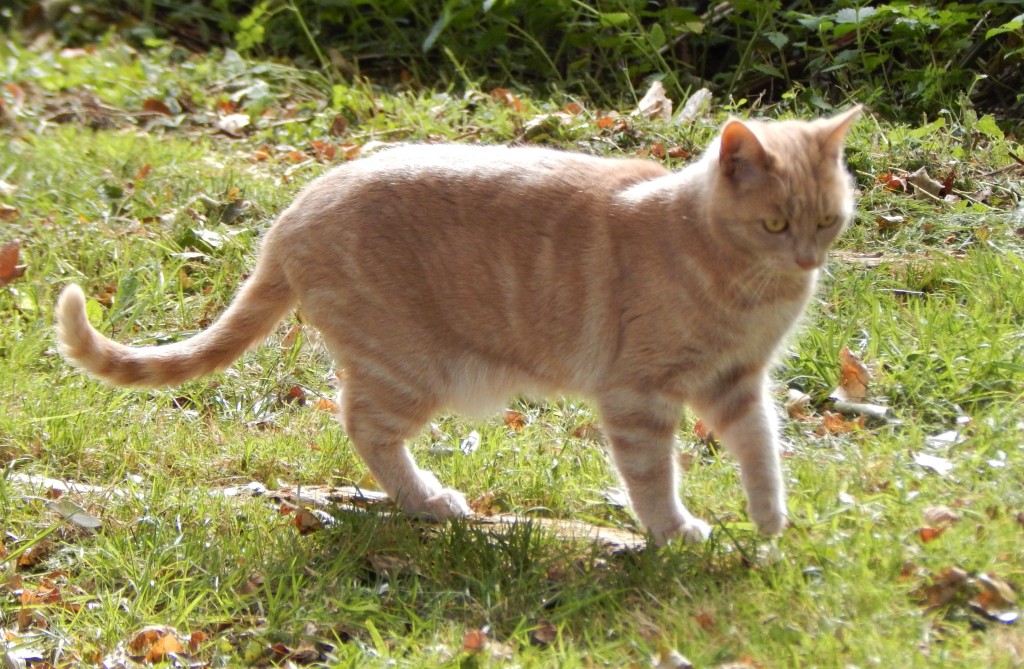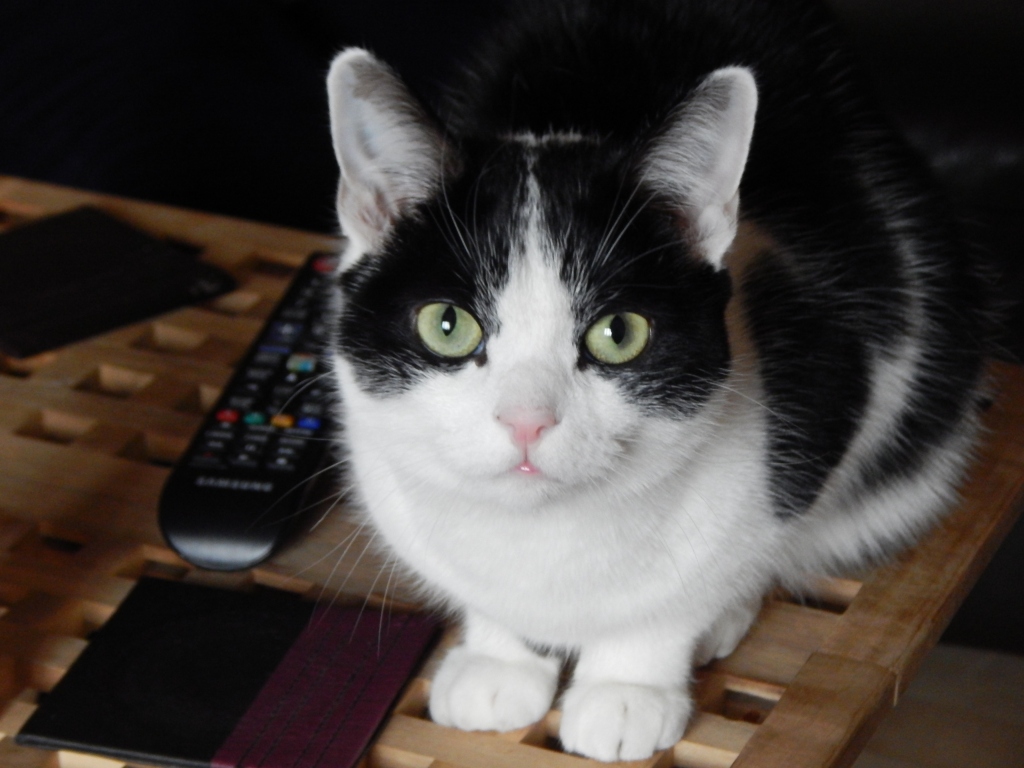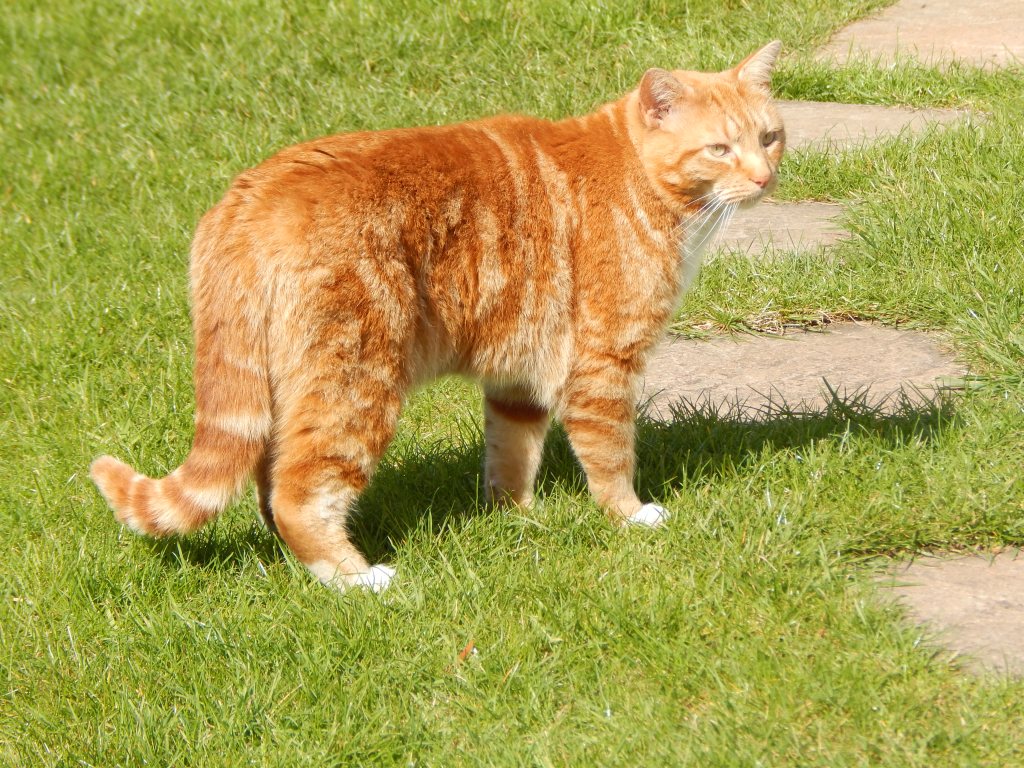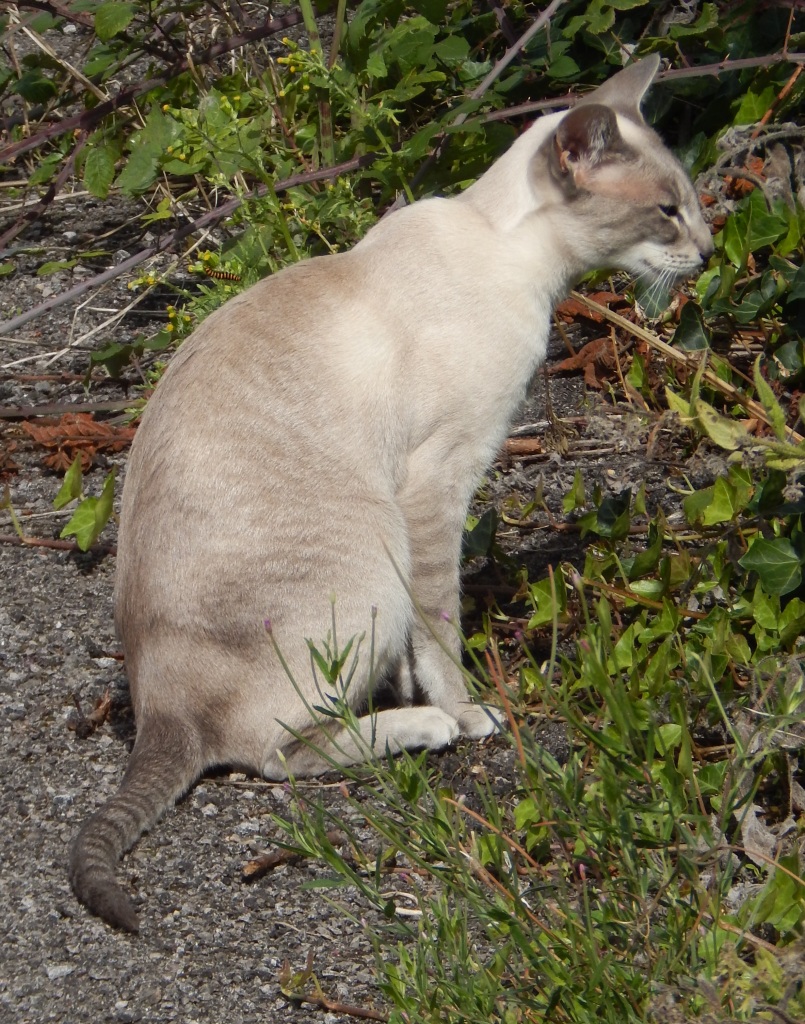
[144] Felis catus, Cat
Introduction
Felis catus is the familiar domestic cat we all know, often kept as a pet but not quite as domesticated as a pet dog. Some of my pictures are pets of family. Some I have just seen while out on my walks.
Taxonomy
Kingdom – Animals
Phylum – Chordates
Class – Mammals
Order – Carnivora
Suborder – Feliformia (All Cats, Hyenas, Mongooses, Meerkats and others)
Family – Felidae (Big Cats and Felinae)
Subfamily – Felinae (Cheetah, Cougar, Lynx and other cats)
Genus – Felis (Small cats)
Scientific Name – Felis catus
In some circle it is regarded as a subspecies of the European Wildcat, Felis sylvestris catus.
Name
Felis is Roman Latin for cat. Cattus, also meaning cat in Latin seems to have arisen about the Sixth Century, possibly from an Arabic or other Near Eastern language.
Species of Cats
We have a problem in names as happens often in Biology. We can use the word ‘Cat’ to mean a general animal that is cat-like as opposed to dog-like. So, it can refer to all species in Feliformia; or in the family Felidae; or in the subfamily Felinae; or in the genus Felis, or just to the (domestic) cat.
Several things generally distinguish cat-like carnivores from dog-like carnivores, although I won’t be precise at which level these are significant. They are general guidelines.
- Cats generally have retractable claws. Dogs cannot retract their claws.
- Cats are more completely carnivorous and have different teeth structures.
- Cats can be adapted to tree climbing.
- The key defining difference lies in the structure of the bones surrounding the inner ears.
Of the two main subfamilies, the smaller cats in Felinae can purr but cannot roar. The Pantherinae (often called Big Cats) have a different structure to their larynxes that allows them to roar.
The genus Felis includes the smallest cat species, including the European Wildcat still found in Scotland.
Description
You know what cats look like. They are active in the day but tend towards nocturnal activities and have excellent vision in the dark.
Their claws are retractable and are usually retracted. They are extended in hunting, self-defence, climbing and in the peculiar action known as kneading. [Kneading is the action of sheathing and unsheathing the claws of their front paws, often alternating between left and right. They generally purr at the same time and it may be a remnant of a maternal sign of affection.]
Whiskers are useful sensory devices because a cat can get through any hole if its head can pass through.
The way cats walk is unusual for mammals. It moves the two left feet before moving the two right feet. This enables it to place the hind paw very close to the previous position of its front paw, minimizing the sound it makes and its tracks. It can speed up to a trotting motion, where diagonally opposite legs move together.
A cat has a very good balance and has the ability to always fall on its feet. If it is upside down when falling, it needs less than a metre to turn its body, which it does by rotating the front first.


Habitat and use
Cats were domesticated about 10 000 years ago, initially somewhere in the Near East. They are now widely kept as pets and are very common in the UK and ,amy other countries.

Cats are not like dogs. Dogs either see their owners as other dominant dogs or they see themselves as humans. They fit into the family and get to know and love their owners. They are relatively easy to train to do simple tasks.
Cats are independent and stay fairly wild at heart. They think of their ‘owners’ as conveniences and are more attached to the location than the people. Many cats wander around and adopt three or four owners – they may stay for periods (and be fed) at different houses and move on to the next one when they feel like it. Cats are not easy to train.
If abandoned or just unwanted, cats can easily become feral. A young kitten needs human contact at a critical time, somewhere around from one to two months of age. Without this contact they are effectively wild and almost impossible to domesticate at a later age.
Types and Breeds
About sixty breeds are recognized. Breeds only originated about 1850. There is not the same degree of variation as with dogs but some variation in colouring, size and furriness.
This one is somewhat like a Siamese but I am no expert and it may not be a purebred cat.

Other Notes
Cats come up many times in history, mythology and are, of course, anthropomorphised in children’s literature. They also are associated with many superstitions and been associated with witches, often as familiars.
See also
We don’t have any native species of lions or tigers so you are unlikely to meet any other cat-like animals.
